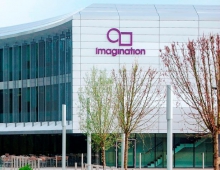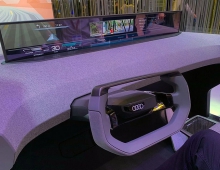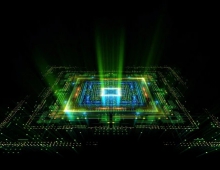
Imagination Details New iPhone's Graphics - Meet The Furian 8XT Architecture
Imagination Technologies unveiled a next-generation architecture for its PowerVR mobile graphics core. The 8XT or Furian architecture, is expected to help to win back shares that it lost over the past year to the Mali core from rival ARM.
Applications such as VR/AR and convertibles require higher graphics resolutions and frame rates, and emerging applications such as ADAS and machine intelligence require increased compute efficiency. Devices designed for these applications are often designed in sub-14nm process technologies. Furian addresses these needs through performance scalability, with an extensible design and a focus on easy system integration and layout in the latest processes. Imagination says that with Furian, embedded products will be able to deliver high-resolution, immersive graphics content and data computation for sustained time periods within mobile power budgets.
Furian's architecture improvements are designed for enhanced power efficiency, widening the performance per mW gap over competing solutions.
The Furian architecture incorporates many of the features of PowerVR. This includes Imagination's Tile Based Deferred Rendering (TBDR), which has been proven over multiple generations of PowerVR GPUs to provide highly efficient embedded graphics.
Furian is designed to achieve the most efficient core utilization and performance density via multiple approaches to scaling. Different designs for low- and high-end IP cores prevent compromises in scalability.
Furian is also designed to allow future function-specialized pipelines to be tightly integrated with the GPU to deliver functionality that may be too expensive or not feasible to implement on a CPU/GPU/DSP, such as ray tracing capability.
Furian uses compute APIs including OpenCL 2.0, Vulkan 1.0 and OpenVX 1.1. The new architecture adds a bi-directional GPU/CPU coherent interface for efficient sharing of data; and a transition to user mode queues from kernel mode queues which reduces latency and CPU utilization for compute operations.
Significantly, Furian features a new 32-wide ALU cluster design for increased performance density and efficiency. A new instruction set architecture (ISA) in the primary and secondary ALU pipelines enables improved utilization of resources and thus efficiency, and multi-threading optimizations allow efficient and very flexible access to on-chip local compute memory.
Furian by the Numbers
Compared to Series7XT Plus GPUs in the same process technology and at same clock frequency for cores with similar silicon area budget, Furian achieves:
- 35% GFLOPS density improvement for improved compute and gaming performance efficiency
- 80% fillrate density improvement for improved UI and casual gaming performance efficiency
- 70-90% gaming density improvement - real world application results even better than the sum of the parts
The architecture's key enhancement is its use of twice as many pipelines in its basic building block, its arithmetic logic units. Each ALU now sports 32 pipelines, up from 16 in Rogue.
Imagination found that the Furian ALUs hit higher utilization rates by connecting registers with a multiply and a multiply/add unit rather than two multiply/add units as in Rogue. The company gave the ALUs a general overhaul, including improvements in the half-dozen specialized pipelines in the ALUs. New support for cache coherent links should serve automotive and GPU compute applications, something that ARM's Bifrost Mali architecture currently uses.
The core's shader units, which include the ALUs, now have more cache memory. The texture units in the shaders also have a dedicated cache for the first time.
In terms of memory bandwidth, the ALUs now sport a multi-threaded local memory and an improved DMA engine. The overall cores support asynchronous data masters than can run in parallel.
Theoretically, SoC designers can connect as many as 64 PowerVR clusters with Furian.
Imagination has already licensed the first Furian IP cores with initial RTL delivered. The first GPU core variants based on Furian will be announced in mid-2017. Apple modifies PowerVR graphics architectures for the iPhone, meaning the graphics capabilities may also reach its devices next year.





















